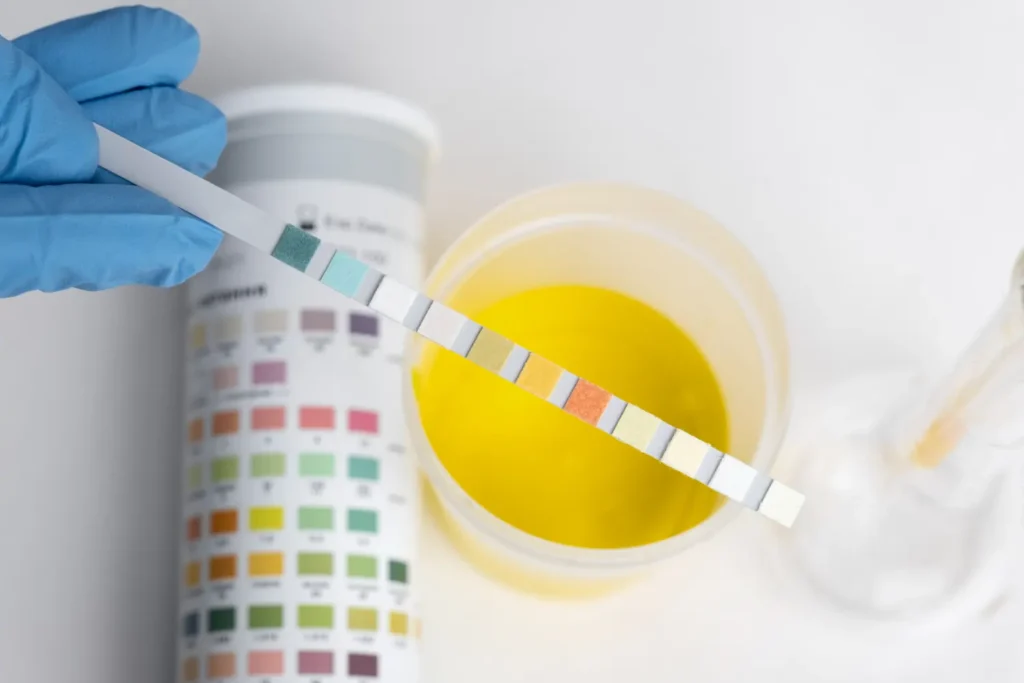For many individuals, the prospect of pregnancy sparks a whirlwind of emotions—excitement, anxiety, hope, or uncertainty. At the center of this emotional mix often lies one small but powerful tool: the pregnancy test. From home kits lining pharmacy shelves to clinical blood tests, pregnancy testing has become a foundational part of reproductive health. But with so many questions surrounding when to take a test, how to interpret the results, and what affects accuracy, it’s no wonder that confusion often accompanies the process.
This article serves as a comprehensive guide to pregnancy testing, aiming to clarify the most frequently asked questions. We’ll explore how pregnancy tests work, the best times to test, what different results mean, and the factors that can influence outcomes. By the end, you’ll be equipped with the knowledge needed to make informed decisions about your reproductive health.
In This Article
How Pregnancy Tests Work: The Role of hCG
All pregnancy tests, whether at-home or clinical, work by detecting human chorionic gonadotropin (hCG)—a hormone produced by the placenta shortly after implantation. After fertilization, the embryo travels to the uterus and implants in the uterine lining. This typically occurs between 6 to 10 days post-ovulation. Once implantation occurs, hCG production begins and rises rapidly, often doubling every 48 to 72 hours in early pregnancy.
There are two primary types of tests that detect hCG:
- Urine tests, available over the counter, provide a quick and convenient way to check for pregnancy.
- Blood tests, performed in a clinical setting, are more sensitive and can detect smaller amounts of hCG earlier in the pregnancy.
Understanding hCG’s timing and trajectory is essential, as it helps determine the best time to test and how reliable the results might be.
When to Take a Pregnancy Test: Timing Is Everything
Timing plays a crucial role in the accuracy of a pregnancy test. While the urge to test early is understandable, testing too soon can lead to false negatives.
Testing After a Missed Period
The most reliable time to take a home pregnancy test is after you’ve missed your period. At this point, hCG levels are typically high enough to be detected by even standard-sensitivity tests. According to the American College of Obstetricians and Gynecologists (ACOG), most home pregnancy tests are about 99% accurate when used after a missed period.
Early Testing: Is It Worth It?
Some brands claim their tests can detect pregnancy as early as six days before a missed period. While this might sound appealing, these early results come with caveats. Studies show that testing before a missed period can result in up to 50% false negatives. The reason? hCG levels may not be high enough yet to be detected.
Here’s a summary of test accuracy based on days before a missed period:
| Days Before Missed Period | Chance of Accurate Positive Result |
|---|---|
| 6 | ~33% |
| 4 | ~51% |
| 2 | ~76% |
| 0 (Day of missed period) | ~93% |
| 1+ Days After | 99%+ |
Source: Clearblue, 2025; Mayo Clinic, 2024
Best Time of Day to Test
The concentration of hCG is highest in the morning, particularly in early pregnancy. Using the first morning urine increases the likelihood of an accurate result. However, as pregnancy progresses and hCG levels rise, testing later in the day becomes more reliable.
Types of Pregnancy Tests: Comparing Methods
Pregnancy tests come in different forms, each with their own pros and cons. Understanding these differences can help you choose the right one for your needs.
Home Urine Tests
These are the most widely used pregnancy tests and can be found in virtually any drugstore. They work by using antibodies that react with hCG in urine.
Advantages:
- Inexpensive and easily accessible
- Quick results (usually within 3–5 minutes)
- Can be used in privacy

Limitations:
- Less sensitive than blood tests
- Prone to user error (e.g., not following instructions)
Clinical Blood Tests
Blood tests can detect smaller quantities of hCG and can provide additional information about pregnancy progression.
There are two types:
- Qualitative blood tests: Simply confirm whether hCG is present.
- Quantitative blood tests (Beta hCG tests): Measure the exact amount of hCG, allowing clinicians to track changes over time.

These tests are particularly useful in:
- Very early pregnancy detection
- Monitoring suspected ectopic pregnancies or miscarriages
- Fertility treatments
Side-by-Side Comparison
| Feature | Home Urine Test | Blood Test |
|---|---|---|
| Sensitivity | Moderate | High |
| Earliest Detection | 10–14 days post-ovulation | 6–8 days post-ovulation |
| Accuracy | ~99% after missed period | 99%+ even before missed period |
| Cost | Low | Higher (lab and service fees) |
| Accessibility | Over the counter | Requires medical visit |
| Time for Results | Minutes | Several hours to 1–2 days |
Interpreting Pregnancy Test Results
Getting a result is just one part of the process. Understanding what that result means is equally important.
Positive Result
A positive test, whether faint or strong, typically indicates pregnancy. Even a faint line means that hCG is present, although you may be in the very early stages.
If a positive test is followed by a period or negative retest, it may have been a chemical pregnancy, where implantation occurred but the embryo did not develop further. This is more common than people realize and is a natural part of early reproduction.
Negative Result
A negative result means that no hCG was detected. However, it doesn’t always mean you’re not pregnant. If testing occurred too early, or if the urine was too diluted, the test may not detect existing hCG.
When in doubt, wait 2–3 days and test again.
Faint Lines and Evaporation Lines
Faint lines can cause confusion. In most cases, a faint line still indicates pregnancy. However, an evaporation line—a colorless streak that appears after the recommended reading window—should not be interpreted as positive. Always check results within the time specified in the instructions.
Factors That Affect Pregnancy Test Accuracy
Understanding what can affect the reliability of your pregnancy test can help you avoid misleading results.
Key Influencing Factors:
| Factor | Impact on Results |
|---|---|
| Testing Too Early | May result in false negatives due to low hCG levels |
| Diluted Urine | Lowers concentration of hCG, reducing test sensitivity |
| Expired Test | Degraded chemicals can reduce test reliability |
| Improper Usage | Not following instructions can skew results |
| Medications | Some fertility drugs with hCG may cause false positives |
| Medical Conditions | Rare tumors or ovarian cysts may interfere with hCG |
Always verify the test’s expiration date and follow directions carefully. If in doubt, seek a blood test or professional evaluation.
Beta hCG Tests: Tracking Pregnancy Progression
Beta hCG tests are particularly valuable in tracking how a pregnancy is developing, especially in high-risk cases or fertility treatments.
Typical hCG levels during early pregnancy are:
| Time Since Last Period | Expected hCG Range (mIU/mL) |
|---|---|
| 3 weeks | 5–50 |
| 4 weeks | 5–426 |
| 5 weeks | 18–7,340 |
| 6 weeks | 1,080–56,500 |
| 7–8 weeks | 7,650–229,000 |
Source: American Pregnancy Association, Mayo Clinic
Rather than one static value, clinicians look for doubling of hCG approximately every 48–72 hours during early pregnancy. Slower increases may warrant further investigation.
Tips for Accurate Testing
To maximize accuracy and reduce stress, keep the following in mind:
- Wait until your period is late. Testing too early can lead to false negatives.
- Use first morning urine. Especially during early detection windows.
- Read instructions thoroughly. Every brand has unique requirements.
- Don’t drink excessive fluids before testing. It can dilute hCG concentration.
- If in doubt, test again. hCG levels double rapidly in early pregnancy.
- Confirm with a healthcare provider. Especially for positive results or if symptoms persist despite a negative test.
Conclusion
Pregnancy testing is a significant, often emotional experience that carries important implications for your reproductive health. By understanding how these tests work, the optimal times to take them, and the many factors that influence their accuracy, you can approach the process with confidence rather than confusion.
Whether you’re hoping for a positive, dreading a surprise, or simply seeking clarity, knowledge truly is power. And when it comes to pregnancy testing, timing, technique, and trust in the process make all the difference.
References
- Consensus. (2024, September 27). Pregnancy Tests: When to Take One, Accuracy, and Results. https://consensus.app/home/blog/pregnancy-tests-when-to-take-one-accuracy-and-results/
- Fertility Answers. (n.d.). Interpreting Your Beta hCG Test Numbers. https://www.fertilityanswers.com/are-you-pregnant-interpreting-your-beta-hcg-test-numbers/
- Planned Parenthood. (n.d.). When to Take a Pregnancy Test. https://www.plannedparenthood.org/learn/pregnancy/pregnancy-tests
- Bajaj Allianz. (2025, January 23). Pregnancy Tests: Timing, Accuracy & Understanding Results. https://www.bajajallianz.com/blog/wellness/understanding-pregnancy-tests-timing-and-accuracy.html
- Clearblue. (2025, January 16). When Can I Take a Pregnancy Test. https://www.clearblue.com/pregnancy-tests/early-pregnancy-testing
- Mount Sinai. (2022, November 10). Pregnancy test Information. https://www.mountsinai.org/health-library/tests/pregnancy-test
- Cleveland Clinic. (2025, March 19). Pregnancy Test: When To Take, Types & Accuracy. https://my.clevelandclinic.org/health/diagnostics/9703-pregnancy-tests
- Mayo Clinic. (2024). Prenatal Testing Overview. https://www.mayoclinic.org/healthy-lifestyle/pregnancy-week-by-week/in-depth/prenatal-testing/art-20045177
- Bird & Be. (2024). How to Read a Pregnancy Test. https://birdandbe.com/pages/how-to-read-pregnancy-test-results
- WashU Medicine. (2023). Flaws in Home Pregnancy Tests. https://medicine.wustl.edu/news/flaw-in-many-home-pregnancy-tests-can-return-false-negative-results/










0 Comments